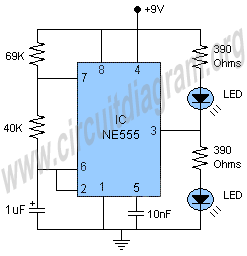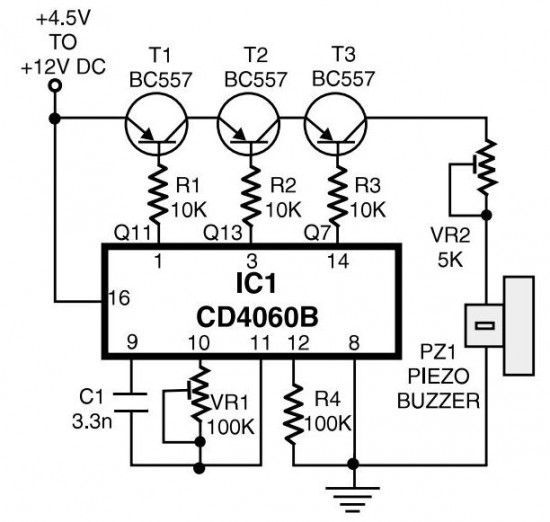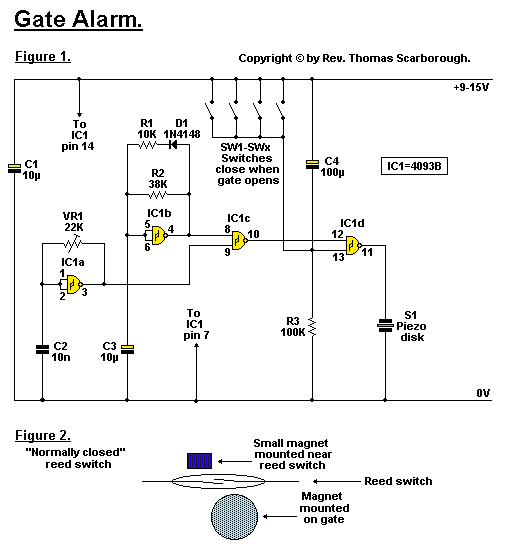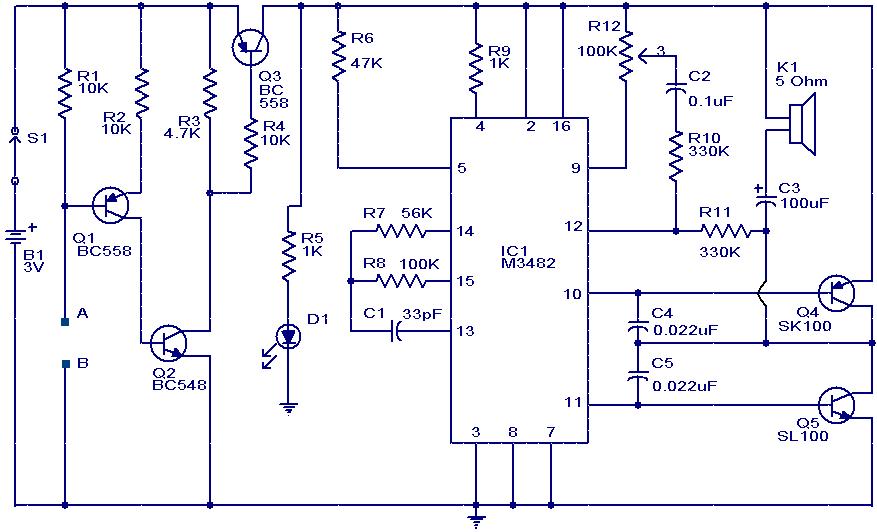
555 tester circuit

A project of a 555 tester circuit, the circuit will start blinking LEDs when power is applied, which will indicate that the IC is working correctly.
The 555 tester circuit is designed to verify the operational status of the 555 timer integrated circuit (IC). Upon application of power, the circuit initiates a blinking LED sequence, serving as a visual indicator of the 555 IC's functionality.
The schematic typically includes a 555 timer configured in astable mode, which allows it to oscillate between high and low states, thereby producing a square wave output. The frequency of this oscillation can be adjusted using external resistors and capacitors connected to pins 6 (threshold) and 2 (trigger) of the 555 timer.
Power is supplied to the circuit through a suitable voltage source, often within the range of 5V to 15V, depending on the specifications of the 555 timer being used. The output from pin 3 of the 555 timer is connected to the anode of the LED, while the cathode is connected to ground through a current-limiting resistor. This resistor prevents excessive current from flowing through the LED, ensuring its longevity.
In addition to the basic components, a capacitor may be included between pins 6 and 2 to stabilize the timing interval and enhance performance. The values of the resistors and capacitor determine the blinking rate of the LED, allowing customization based on the user's requirements.
This circuit serves not only as a functional tester for the 555 timer but also as an educational tool for understanding the principles of timing circuits and LED operation. It demonstrates key electronic concepts such as oscillation, timing intervals, and the relationship between frequency and component values.A project of a 555 tester circuit, the circuit will start blinking LEDs when power is applied which will indicate that the IC is working correctly.. 🔗 External reference
The 555 tester circuit is designed to verify the operational status of the 555 timer integrated circuit (IC). Upon application of power, the circuit initiates a blinking LED sequence, serving as a visual indicator of the 555 IC's functionality.
The schematic typically includes a 555 timer configured in astable mode, which allows it to oscillate between high and low states, thereby producing a square wave output. The frequency of this oscillation can be adjusted using external resistors and capacitors connected to pins 6 (threshold) and 2 (trigger) of the 555 timer.
Power is supplied to the circuit through a suitable voltage source, often within the range of 5V to 15V, depending on the specifications of the 555 timer being used. The output from pin 3 of the 555 timer is connected to the anode of the LED, while the cathode is connected to ground through a current-limiting resistor. This resistor prevents excessive current from flowing through the LED, ensuring its longevity.
In addition to the basic components, a capacitor may be included between pins 6 and 2 to stabilize the timing interval and enhance performance. The values of the resistors and capacitor determine the blinking rate of the LED, allowing customization based on the user's requirements.
This circuit serves not only as a functional tester for the 555 timer but also as an educational tool for understanding the principles of timing circuits and LED operation. It demonstrates key electronic concepts such as oscillation, timing intervals, and the relationship between frequency and component values.A project of a 555 tester circuit, the circuit will start blinking LEDs when power is applied which will indicate that the IC is working correctly.. 🔗 External reference





